What Causes Skin Yeast Infections: Symptoms, Types, Causes, and Treatments
What causes skin yeast infections? Learn about the symptoms, types, causes, and treatments of fungal skin infections like athlete’s foot, jock itch, and ringworm.
Types of Fungal Skin Infections
A fungal infection, also called mycosis, is a skin disease caused by a fungus. There are millions of species of fungi that live in the dirt, on plants, on household surfaces, and on your skin. Sometimes, they can lead to skin problems like rashes or bumps.
Fungal skin infections can happen anywhere on your body. Some of the most common are athlete’s foot, jock itch, and ringworm.
Athlete’s Foot
Athlete’s foot, also called tinea pedis, is a fungal infection of your foot. The fungi grow best in warm, moist places such as shoes, socks, swimming pools, locker rooms, and public showers. It happens more often in people who wear tight shoes, who don’t change their sweaty socks, and who use public baths and pools.
Causes of Athlete’s Foot
The fungi behind athlete’s foot live on the dead tissue of your hair, toenails, and outer skin layers. At least four kinds of fungus can cause the infection, with the most common being Trichophyton rubrum.

Symptoms of Athlete’s Foot
Signs of athlete’s foot vary from person to person and can include peeling, cracking, and scaly feet, blisters, red or softened skin, itching, and burning.
Types of Athlete’s Foot
The three main types of athlete’s foot are interdigital (between the toes), moccasin (involving the entire sole and sides of the foot), and vesicular (with sudden onset of fluid-filled blisters).
Diagnosis and Treatment of Athlete’s Foot
Doctors may need to examine a skin sample under a microscope to confirm a fungal infection. Treatment usually involves antifungal medicines applied to the skin or, in severe cases, taken orally. Keeping the feet clean and dry is also important.
Jock Itch
Jock itch, also known as tinea cruris, is a type of fungal infection that affects the groin, inner thighs, and buttocks. It’s caused by a fungus called tinea and is more common in warm, moist climates.
Is Jock Itch Contagious?
Jock itch is only mildly contagious and can spread through direct contact or indirectly through infected objects.

Symptoms of Jock Itch
Symptoms of jock itch include a red, itchy, ring-shaped rash on the groin or thighs, as well as flaking, peeling, or cracking skin.
Diagnosis and Treatment of Jock Itch
Doctors can usually diagnose jock itch based on its appearance and location. Over-the-counter antifungal medicines can treat most cases, but severe cases may require a prescription cream.
Ringworm
Ringworm, also called tinea corporis, is a fungal skin infection characterized by a red, circular, flat sore with a winding, worm-like edge. Despite its name, it is not caused by a worm but by a fungus.
Is Ringworm Contagious?
Ringworm can spread through direct contact with infected people or animals, as well as indirectly through contaminated clothing or furniture. Heat and humidity can also help the infection spread.
Symptoms of Ringworm
Ringworm symptoms include a red, circular, flat sore with a raised outer edge and normal-looking skin in the middle. Patches or red rings may overlap.
Diagnosis and Treatment of Ringworm
Doctors can usually diagnose ringworm based on its appearance, and they may take a skin sample to confirm the fungal infection. Treatment typically involves antifungal medicines.
/vaginal-yeast-infections-overview-3521202_color1-5c773bccc9e77c0001e98dc1-5bc8fbef02bc415b8c2ebbe292936100.png)
Yeast Infections
Yeast infections are a type of fungal infection caused by an overgrowth of a fungus called Candida. While yeast infections are more common in the vagina, they can also occur on the skin and in other areas of the body.
Causes of Yeast Infections
Yeast infections are often caused by factors that disrupt the natural balance of fungi and bacteria on the skin, such as antibiotic use, pregnancy, diabetes, or poor hygiene.
Symptoms of Yeast Infections
Symptoms of a yeast infection on the skin can include red, itchy, or irritated patches, as well as a rash, blisters, or cracked skin.
Treatment of Yeast Infections
Yeast infections are typically treated with antifungal creams or ointments, or in more severe cases, oral antifungal medications. Keeping the affected area clean and dry is also important.
Preventing Fungal Skin Infections
To help prevent fungal skin infections, it’s important to practice good hygiene, wear appropriate clothing and footwear, and avoid sharing personal items with others. Seeking prompt treatment is also crucial to prevent the infection from spreading or becoming more severe.

Symptoms, Types, Causes, and Treatments
Written by WebMD Editorial Contributors
- What Is a Fungal Infection?
- Fungal Infection Symptoms
- Types of Fungal Infections
- Athlete’s Foot
- Jock Itch
- Ringworm
- Yeast Infections
- More
A fungal infection, also called mycosis, is a skin disease caused by a fungus.
There are millions of species of fungi. They live in the dirt, on plants, on household surfaces, and on your skin. Sometimes, they can lead to skin problems like rashes or bumps.
A fungal skin infection might cause:
- Irritation
- Scaly skin
- Redness
- Itching
- Swelling
- Blisters
Fungal skin infections can happen anywhere on your body. Some of the most common are athlete’s foot, jock itch, ringworm, and yeast infections.
Athlete’s foot, also called tinea pedis, is a fungal infection of your foot.
The fungi grow best in warm, moist places such as shoes, socks, swimming pools, locker rooms, and public showers. They’re often found in the summer and in hot, humid climates. It happens more often in people who wear tight shoes, who don’t change their sweaty socks, and who use public baths and pools.
They’re often found in the summer and in hot, humid climates. It happens more often in people who wear tight shoes, who don’t change their sweaty socks, and who use public baths and pools.
Athlete’s foot causes
The fungi behind athlete’s foot live on the dead tissue of your hair, toenails, and outer skin layers. At least four kinds of fungus can cause the infection. The most common is Trichophyton rubrum.
Athlete’s foot symptoms
Signs of athlete’s foot vary from person to person. You might have:
- Peeling, cracking, and scaly feet
- Blisters
- Skin that’s red, softened, or broken down
- Itching
- Burning
Types of athlete’s foot
- Interdigital. This is also called toe web infection. Most people with athlete’s foot have this form. It usually occurs between your two smallest toes. The infection can spread to the sole of your foot.
- Moccasin.
 This form can begin with irritation, dryness, itching, or scaly skin. Over time, your skin may thicken and crack. This infection can involve your entire sole and extend onto the sides of your foot.
This form can begin with irritation, dryness, itching, or scaly skin. Over time, your skin may thicken and crack. This infection can involve your entire sole and extend onto the sides of your foot. - Vesicular. This is the rarest kind of athlete’s foot. It usually begins with a sudden outbreak of fluid-filled blisters, often on the underside of your foot. They also can appear between your toes, on your heel, or on top of your foot.
Athlete’s foot diagnosis
Not all itchy, scaly feet are caused by a fungus. Your doctor may scrape off a bit of skin and look at it under a microscope to check for a different condition.
Athlete’s foot treatment
Your doctor might give you antifungal medicine to put on your skin or, in severe cases, another kind to take by mouth. Be sure to keep your feet clean and dry.
Athlete’s foot prevention
To keep from getting athlete’s foot, wear shower sandals in public showering areas, wear shoes that let your feet breathe, and wash your feet every day with soap and water. Dry them thoroughly, and use a quality foot powder.
Dry them thoroughly, and use a quality foot powder.
A type of fungus called tinea causes jock itch. The infection is also known as tinea cruris. Tinea loves warm, moist areas like your genitals, inner thighs, and buttocks. Infections happen more often in the summer or in warm, wet climates.
Jock itch is a red, itchy rash that’s often ring-shaped.
Is jock itch contagious?
It’s only mildly contagious. It can spread from person to person through direct contact or indirectly through objects with the fungus on them.
Jock itch symptoms
Symptoms of jock itch include:
- Itching, chafing, or burning on your groin or thigh
- A red, circular, rash with raised edges
- Redness on your groin or thigh
- Flaking, peeling, or cracking skin
Jock itch diagnosis
Doctors can usually diagnose it by what it looks like and where it is on your body. They might look at a sample of skin under a microscope to be sure.
Jock itch treatment
Keep the affected area clean and dry. Over-the-counter antifungal medicines can treat most cases of jock itch. In severe cases, your doctor might need to give you a prescription cream. No matter your treatment, be sure to:
- Wash and dry the area with a clean towel
- Use the antifungal medicine as directed
- Change clothes — especially your underwear — every day
Ringworm, also called tinea corporis, isn’t a worm but a fungal skin infection. It’s named for its ring-shaped rash with a winding, worm-like edge.
Is ringworm contagious?
Ringworm can spread through direct contact with infected people or animals. You can also pick it up off clothing or furniture. Heat and humidity can help spread the infection.
Ringworm symptoms
Ringworm is a red, circular, flat sore that can happen along with scaly skin. The outer part of the sore might be raised while the skin in the middle appears normal.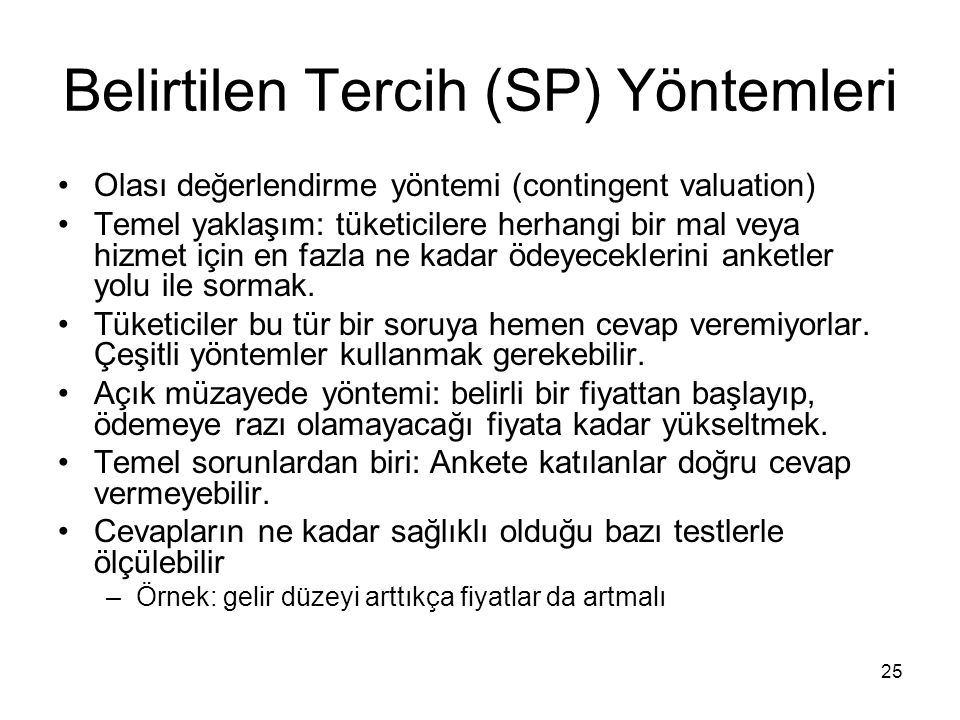 Patches or red rings may overlap.
Patches or red rings may overlap.
Ringworm diagnosis
Your doctor can diagnose ringworm based on your symptoms. They might ask whether you’ve come into contact with infected people or animals. They might also take samples from the area and look at them under a microscope to be sure.
Ringworm treatment
Treatment usually involves antifungal medications that you put on your skin. You might use an over-the-counter cream such as:
- Clotrimazole (Lotrimin, Mycelex)
- Miconazole (Micatin, Monistat-Derm)
- Terbinafine (Lamisil)
In more severe cases, you might need prescription medications to put on your skin or take by mouth.
Yeast infections of your skin are called cutaneous candidiasis. A type of fungus called candida causes these infections when it grows too much. Yeast infections aren’t contagious.
The infections are most common in warm, moist, creased areas of your body, including your armpits and groin.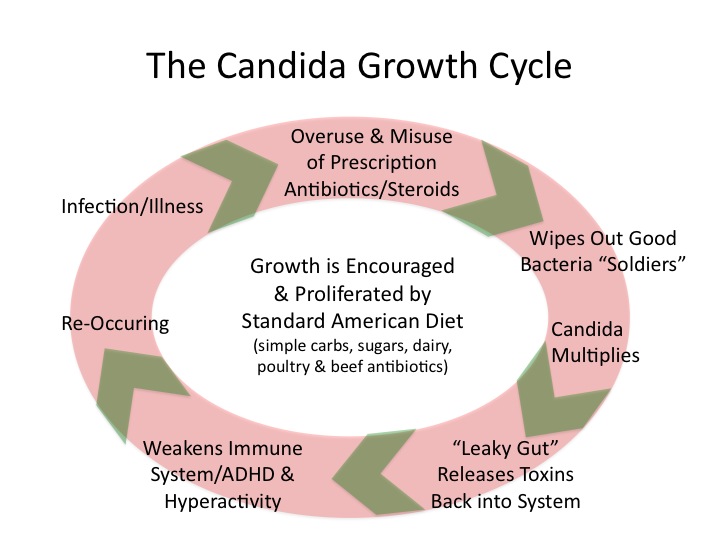 They often happen in people who are obese or who have diabetes. People taking antibiotics are also at higher risk.
They often happen in people who are obese or who have diabetes. People taking antibiotics are also at higher risk.
Candida can cause diaper rash in infants. It can also cause infections in your nails, vagina, or mouth (oral thrush).
Yeast infection symptoms
Signs of a yeast infection on your skin include:
- Rash
- Patches that ooze clear fluid
- Pimple-like bumps
- Itching
- Burning
Signs of a yeast infection in your nail beds include:
- Swelling
- Pain
- Pus
- A white or yellow nail that separates from the nail bed
Signs of thrush (yeast infection of your mouth) include:
- White patches on your tongue and inside your cheeks
- Pain
Signs of a vaginal yeast infection include:
- White or yellow discharge from your vagina
- Itching
- Redness in the external area of your vagina
- Burning
Yeast infection diagnosis
Your doctor will ask about your medical history and do a physical exam. They might also take a sample from the affected area to look at under a microscope.
They might also take a sample from the affected area to look at under a microscope.
Yeast infection treatment
Treatment depends on the infection. Medicated creams can treat most skin yeast infections. For a vaginal infection, you can usually use medicated suppositories. A medicated mouthwash or lozenges that dissolve in your mouth may treat oral thrush. If you have a severe infection or a weakened immune system, you might need anti-yeast medications that you take by mouth.
Top Picks
Ringworm: Symptoms, Causes, Treatments
Written by WebMD Editorial Contributors
- What Is Ringworm?
- What Are the Symptoms Of Ringworm?
- How Do You Get Ringworm?
- How Do I Know If I Have Ringworm?
- What’s the Treatment For Ringworm?
- How Can I Prevent Ringworm?
- More
Ringworm isn’t a worm.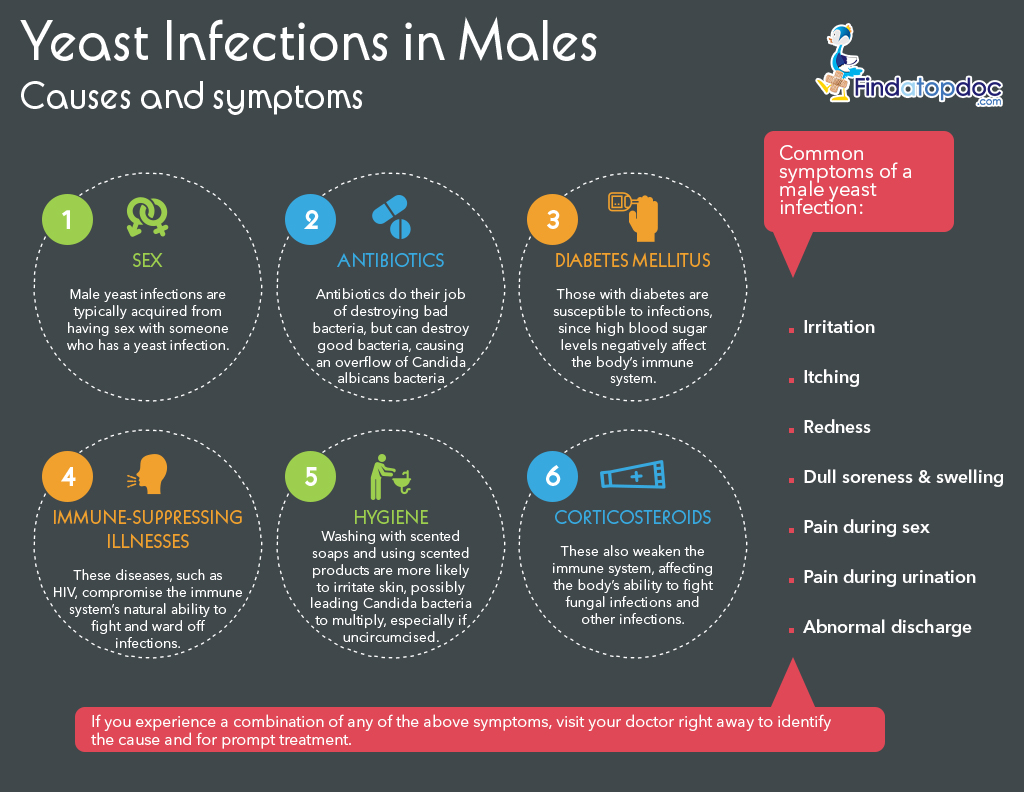 It’s a skin infection that’s caused by moldlike fungi that live on the dead tissues of your skin, hair, and nails. You can get it in any of these places — and on your scalp.
It’s a skin infection that’s caused by moldlike fungi that live on the dead tissues of your skin, hair, and nails. You can get it in any of these places — and on your scalp.
When you get it between your toes, it’s what people call athlete’s foot. If it spreads to your groin, it’s known as jock itch.
The telltale sign is a red, scaly patch on light skin or brown or gray patches on skin of color. You may also get bumps that itch. Over time, the bump turns into a ring- or circle-shaped patch. It may turn into several rings. The inside of the patch is usually clear or scaly. The outside might be slightly raised and bumpy.
Ringworm on your scalp tends to start out as a bump or small sore. It may turn flaky and scaly, and your scalp may feel tender and sore to the touch. You may notice that your hair starts to fall out in patches.
Ringworm will often look red on light skin, but brown or gray on skin of color. Most ringworm of the skin can be treated at home with creams you can buy without a prescription.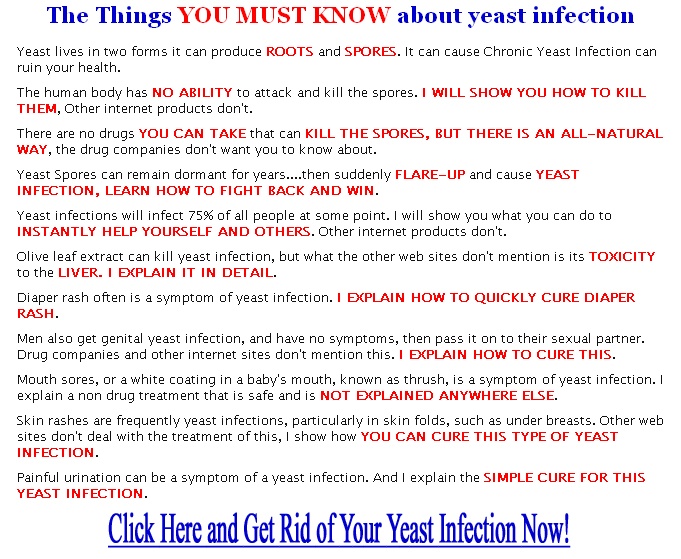 Photo credit: iStock/Getty Images
Photo credit: iStock/Getty Images
Ringworm is highly contagious. You can catch it in any of the following ways:
- From another person. Ringworm often spreads by skin-to-skin contact.
- From your pets. Rubbing or grooming Sparky? Wash your hands when you’re finished. It’s also very common in cows.
- By touching objects. The fungus that causes ringworm can linger on surfaces, clothes, towels, and in combs and brushes.
- From soil. If you’re working or standing barefoot in soil that’s infected with the fungus that causes ringworm, you can get it, too.
You’ll have to see your doctor to be sure if the infection is ringworm. There are a number of other skin conditions that look like it.
Your doctor will probably scrape some skin from the itchy, scaly areas and look at them under a microscope.
How the infection is treated depends on where it is and how bad it is. In many cases, your doctor may recommend an over-the-counter (OTC) medicine you can get at the drugstore. If the ringworm is on your skin, an OTC antifungal cream, lotion, or powder may work just fine. Some of the most popular ones are clotrimazole (Lotrimin, Mycelex) and miconazole.
In many cases, your doctor may recommend an over-the-counter (OTC) medicine you can get at the drugstore. If the ringworm is on your skin, an OTC antifungal cream, lotion, or powder may work just fine. Some of the most popular ones are clotrimazole (Lotrimin, Mycelex) and miconazole.
In most cases, you’ll have to use the medicines on your skin for 2 to 4 weeks to make sure you kill the fungus that causes ringworm. It also will lower its chance of coming back.
If you have ringworm on your scalp or in many different places on your body, OTC treatments probably won’t be enough. Your doctor will have to write you a prescription.
Keep an eye out for symptoms that get worse or don’t clear up after 2 weeks. If they don’t, call your doctor.
The fungi that cause it are everywhere. Still, here are some things you can do to lower your chances of getting ringworm or stop it from spreading:
- Keep your skin clean and dry.
- Wear flip-flops in locker rooms and public showers.

- Change your socks and underwear at least once each day.
- Don’t share clothes or towels with someone who has ringworm.
- If you play sports, keep your gear and uniform clean — and don’t share them with other players.
- Wash your hands with soap and water after playing with pets. If your pets have ringworm, see your vet.
Top Picks
How to avoid yeast infections: symptoms, treatment and prevention
Contents
- 1 Prevention and treatment of yeast infections in women: is it necessary to consult a gynecologist?
- 1.
 1 What are yeast infections?
1 What are yeast infections? - 1.2 Origin of yeast infections
- 1.2.1 Microorganisms
- 1.2.2 Weak immunity
- 1.2.3 Diabetes mellitus
- 1.2.4 Other factors
9 0008
- 1.3 Symptoms of yeast infections
- 1.4 How is a yeast infection diagnosed?
- 1.4.1 Clinical signs and history
- 1.4.2 Microscopic examination
- 1.4.3 Culture
- 1.5 Treatment of yeast infections
- 1.5.1 Antimicrobials
- 1.5.2 Topical treatment
- 1.5.3 Warning
- 1.6 Prevention of yeast infections
- 1.6.1 Maintain vaginal hygiene
- 1.6.2 Avoid tight synthetic clothing and the use of pads
- 1.6.3 Watch your gut bacteria
- 1.6.4 Keep sex dry and good quality
- 1.7 Yeast species that cause infections
- 1.7.1 Candida 9 0008
- 1.7.2 Cryptococcus (Cryptococcus )
- 1.7.3 Pythyroid yeast (Pityrosporum)
- 1.
 8 Yeast infections: Candida
8 Yeast infections: Candida- 1.8.1 What is Candida and how does it cause yeast infections?
- 1.9 Effects of yeast infections on pregnancy and breastfeeding
- 1.10 Yeast infections and their effects on the immune system
- 1.10.1 Overview of yeast infections
- 1.10.2 How do yeast infections affect the immune system?
- 1.10.3 How to strengthen the immune system in yeast infections?
- 1.10.4 Conclusion
- 1.11 Related videos:
- 1.12 Q&A:
- 1.12.0.1 What are the causes of yeast infections?
- 1.12.0.2 Can yeast infections be avoided?
- 1.12.0.3 What are the symptoms associated with yeast infections?
- 1.12.0.4 Do I need to see a doctor for yeast infections?
- 1.12.0.5 What treatments are used for yeast infections?
- 1.12.0.6 What role does the immune system play in fighting yeast infections?
- 1.
Yeast infections are a common disease caused by the fungus Candida. In the article you will find information about the causes, symptoms, diagnosis and treatment of this disease. Learn how to prevent recurrences and manage yeast infections in various locations.
In the article you will find information about the causes, symptoms, diagnosis and treatment of this disease. Learn how to prevent recurrences and manage yeast infections in various locations.
Yeast infections are diseases caused by the growth of yeast-like fungi in the human body. Infections are caused by various strains of fungi, including Candida albicans, which is the most common pathogen in humans.
Increased reproduction of yeast-like fungi can occur for various reasons. One of the most common factors is reduced immunity, which can occur as a result of illness, stress, fatigue, or antibiotics. Also, the risk of developing yeast infections increases in women during menstruation and pregnancy, as well as in people with diabetes.
The symptoms of a yeast infection can vary depending on where the fungus is located. The most common infections are in the mouth, vagina, and skin. Symptoms may include itching, redness, and swelling in the affected area, as well as soreness and discharge.
Treatment of yeast infections may include the use of antifungal drugs, as well as the correction of risk factors such as immunodeficiency and impaired microbiocinosis. It is important to consult a doctor at the first signs of infection and identify the cause of its occurrence in order to conduct effective therapy and prevent the development of complications.
What are yeast infections?
yeast infections or fungal infections are diseases caused by fungi that usually live on the skin, in the intestines, or elsewhere in the body. Some of these fungi can cause infections, especially where the skin is damaged or the immune system is weakened.
Candida is a type of fungus that often causes yeast infections. It is usually found on the skin, in the mouth, or on the scalp. If the balance between the general microflora of the body and pathogenic microorganisms is disturbed, Candida can become more aggressive and cause an infection.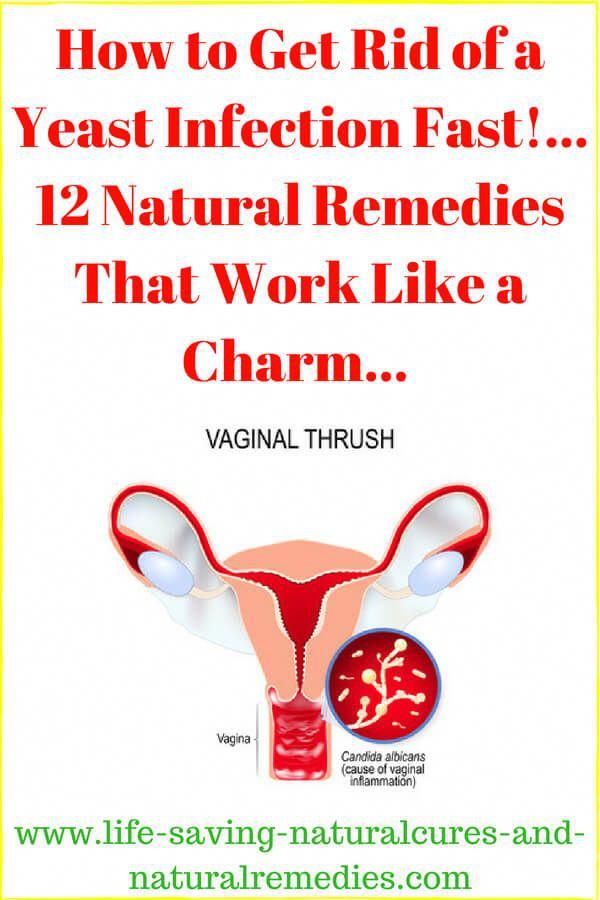
Symptoms of yeast infections may include itching, skin rash, swelling, pain, redness or discomfort. The most common yeast infections are caused by an imbalance in the microflora in the vagina in women. In men, yeast infections can be observed on the skin of the genitals or on the glans penis.
Treatment of yeast infections may include the use of antifungals, which quickly kill the fungi that cause infections. It is also recommended to follow the rules of hygiene, avoid tight synthetic clothing and use natural fabrics, as well as maintain a healthy lifestyle to strengthen immunity and prevent relapses.
- Yeast infections are a contagious disease caused by fungi.
- Candida is one of the common causes of yeast infections.
- Symptoms include itching, skin rash, swelling, pain, redness or discomfort.
- Treatment includes antifungals and good hygiene.
Origin of yeast infections
Microorganisms
Yeast infections are the result of the growth and spread of certain types of yeast.
Yeast is naturally present in various parts of the body, including the digestive system, skin and vagina in women.
However, a suitable growth medium can encourage yeast overgrowth and cause infection.
For example, wet shoes and clothing can increase moisture between the toes and promote yeast growth.
Weak immune system
Weak immune system can also cause yeast infections.
Weak immunity can be caused by a variety of factors such as stress, lack of sleep, an unbalanced diet and certain medications.
Diabetes mellitus
People with diabetes also have an increased risk of yeast infections.
High blood sugar can encourage yeast growth in the vagina or on the skin.
Complications of diabetes, such as vaginal itching and discharge, may also increase the risk of yeast infections in women.
Other factors
Other factors that can contribute to yeast infections include: taking antibiotics, using harsh shower gels and soaps, using poor quality pads and tampons, unacidifying the vaginal environment, etc.
Yeast infections should be seen by a doctor for diagnosis and treatment.
Yeast Infection Symptoms
Skin Problems: One of the most common symptoms of yeast infections is skin rashes. It can occur anywhere on the body where there are wrinkles or warmth. Itching and redness of the skin can also be a symptom.
Gastrointestinal disorders: Yeast infections can affect the digestive system, leading to diarrhea, constipation, stomach cramps and vomiting. They can also lead to digestive problems with certain foods, such as dairy or wheat.
Fatigue: Yeast infections can cause fatigue and weakness, which is often the result of difficult digestion and toxins from damaged intestinal microflora.
- Thrush: One of the most common symptoms of yeast infections is thrush. This is a vaginal infection that occurs due to an overgrowth of yeast in the vagina and can cause itching, burning, and soreness.

- Fungal nail infections: Yeast infections can also present as fungal nail infections, which can be very painful and frightening and unsightly.
If you experience these symptoms intermittently, you may have a yeast infection. It is necessary to visit a doctor and undergo appropriate treatment.
How is a yeast infection diagnosed?
Clinical signs and history
Diagnosis of yeast infections begins with clinical signs and the patient’s history. Signs may include itching and burning at the site of the lesion, white discharge, swelling, and redness of the skin. It is important to find out if the patient had similar symptoms before, whether he was treated and what results were achieved.
Microscopic examination
To confirm the diagnosis, a microscopic examination of the discharge obtained from the site of the lesion is performed. For this, special dyes are used that allow you to see yeast cells in preparations. This method can help determine which types of yeast are causing the infection.
This method can help determine which types of yeast are causing the infection.
Culture
In addition, culture is used for diagnosis. The secretions from the lesions are placed in nutrient media that promote the growth of yeast colonies. This method allows you to determine the type of yeast, identify sensitivity to antifungal drugs and choose the most effective treatment.
- It is important to pay attention to clinical signs and patient history when diagnosing yeast infections;
- Microscopic examination of the discharge from the site of the lesion helps to identify the type of yeast;
- Culture helps identify antifungal susceptibility and select the most effective treatment.
Treatment of yeast infections
Antimicrobials
Yeast infections are usually treated with antimicrobials. Some of them can be purchased without a prescription, but for more serious cases, you need to see a doctor and get a prescription for strong antimicrobials. One of the most popular drugs is fluconazole, which is difficult to become stable, which means it will be effective with repeated use. However, the use of antimicrobials can have side effects, so do not overuse them unnecessarily.
One of the most popular drugs is fluconazole, which is difficult to become stable, which means it will be effective with repeated use. However, the use of antimicrobials can have side effects, so do not overuse them unnecessarily.
Topical treatment
In addition to antimicrobials, topical treatment using creams, ointments or suppositories may be effective. They are a milder treatment option and may be effective in treating the early stages of yeast infections. However, as with any other treatment, do not overuse them unnecessarily, as side effects may be possible.
Warning
To help prevent yeast infections, follow these tips: maintain a healthy diet, avoid excessive alcohol and sugar, wear cotton underwear, use condoms during sexual intercourse, and change tampons and pads periodically.
Prevention of yeast infections
Maintain vaginal hygiene
Maintaining proper hygiene of the vaginal area is very important in preventing yeast infections. You should shower or bathe daily and use a mild soap to clean the area around your vagina. You should also avoid any intimate hygiene products, as they can upset the natural pH balance of the vagina, making it more prone to yeast infections.
You should shower or bathe daily and use a mild soap to clean the area around your vagina. You should also avoid any intimate hygiene products, as they can upset the natural pH balance of the vagina, making it more prone to yeast infections.
Avoid tight synthetic clothing and use of panty liners
Wearing tight synthetic panties or pants can increase moisture and allow yeast to thrive in the vagina. It is better to choose natural fabrics and loose fit. You should also avoid using pads, which can also change the pH balance of the vagina and lead to yeast infections.
Watch your gut bacteria
Immunity has to do with how the nutrients we consume are absorbed. It is also important to monitor the bacteria that are found in the intestines and avoid overeating sugar. Prebiotics are especially helpful, these simple foods help to improve the intestinal microflora. A healthy gut microflora can boost the immune system and prevent infections, including yeast infections in the vagina.
Keep sexual relationships dry and of good quality
Decompensated or sexually inactive women are at increased risk of infections. It is possible to get an infection during intercourse, so you should avoid rough movements and use lubricants if necessary. Sexual partners may also be treated to clear the infection and not carry it back. Otherwise, the healing process will be disrupted and the risks of infection will be higher.
In general, yeast infections can be prevented by good hygiene, looking after your gut bacteria, choosing the right underwear, and avoiding traumatic sexual positions. If you experience symptoms of a yeast infection, see your doctor for appropriate treatment.
Infectious yeast species
Yeast is a single-celled fungus that is often used in industry and food processing, but can also cause various infections in humans.
Candida
Candida is the most common yeast that causes infections in humans. Candida can affect the skin, mouth, genitals, and respiratory organs. This yeast can cause mild itching and irritation, as well as more serious infections such as esophageal candidiasis.
This yeast can cause mild itching and irritation, as well as more serious infections such as esophageal candidiasis.
Cryptococcus
Cryptococcus is a yeast that can be found in soil and insects, as well as in animals. Although they are not common infectious agents, cryptococcus can cause very serious illness in humans, such as cryptococcal meningitis, which affects the brain and spinal cord.
Pythyroid yeast (Pityrosporum)
Pythyroid yeast can cause skin infections such as seborrheic dermatitis and pityropsoriasis, which are manifested by various types of rashes. This yeast is found on the surface of the skin in most people, but it can cause an infection in some people.
- Yeast is a type of microorganism that can cause infections in humans.
- Candida is the most common yeast causing infections.
- Cryptococcal meningitis can be caused by cryptococci that are present in soil, insects and animals.
- Pythyroid yeast can cause various skin infections such as seborrheic dermatitis.

Yeast infections: Candida
What is Candida and how does it cause yeast infections?
Candida is a fungal species that can cause yeast infections. It can grow in different parts of the body, such as the mouth, intestines, genitals, or skin.
Candida can cause various types of yeast infections such as skin candidiasis, urethritis, vulvovaginitis, thrush and gastroesophageal reflux.
To prevent yeast infections, it is recommended to maintain health through proper nutrition, adequate sleep, stress reduction and avoidance of excessive consumption of alcohol and sugar. It is also important to select probiotics to support healthy gut flora and limit antibiotics to the minimum necessary.
If you suspect a yeast infection, it is best to see a doctor for diagnosis and treatment. Late treatment can aggravate symptoms and cause serious complications.
Effect of yeast infections on pregnancy and breastfeeding
Yeast infections such as candidiasis may affect pregnancy and breastfeeding. During pregnancy, women’s immunity decreases, which can lead to the development of yeast infections. In addition, the use of contraceptives and antibiotics can also contribute to infection.
During pregnancy, women’s immunity decreases, which can lead to the development of yeast infections. In addition, the use of contraceptives and antibiotics can also contribute to infection.
Pregnant women may be at risk of preterm labor and preterm pregnancy if they have yeast infections. The disease can also be transmitted to the child during childbirth, which will lead to the development of candidiasis in the newborn.
When breastfeeding, the infection can be transmitted to the mammary glands, which can lead to illness and difficulty in feeding the baby. For the prevention and treatment of yeast infections in pregnant women and nursing mothers, consultation with a doctor and the use of appropriate medications is recommended.
Yeast infections and their effect on the immune system
Yeast infections at a glance
Yeast infections are diseases caused by fungi of the genus Candida. They can affect various parts of the body, including the skin, mouth, stomach, and genitals. Often, yeast infections occur when the balance of microorganisms in the body is disturbed, when the number of Candida mushrooms increases dramatically.
Often, yeast infections occur when the balance of microorganisms in the body is disturbed, when the number of Candida mushrooms increases dramatically.
How do yeast infections affect the immune system?
Yeast infections can have a negative effect on the immune system. With repeated or prolonged infections, the immune system can weaken and become vulnerable to other diseases. In addition, Candida can lead to symptoms such as inflammation and allergic reactions, which can be detrimental to overall health.
How to strengthen the immune system for yeast infections?
A healthy lifestyle is essential for strengthening the immune system in yeast infections. It is important to eat right, avoid sugary and fatty foods, and increase your intake of fruits and vegetables. It is also important to exercise regularly, control weight and get enough sleep. In addition, you can take complexes of vitamins and minerals, as well as probiotics to restore normal microflora in the body.
Conclusion
Yeast infections can have a negative effect on the immune system, so it is important to take care of your health and take steps to prevent such diseases. In addition, at the first signs of infection, you should consult a doctor in order to start treatment in a timely manner.
Related videos:
Q&A:
What causes yeast infections?
Yeast infections can be caused by microflora disorders, reduced immunity, antibiotics, changes in hormone levels during pregnancy or menopause, irregular sexual activity, and some other factors.
Can yeast infections be avoided?
Personal hygiene and proper nutrition, control of hormone levels, regular sex life, restoration of microflora after taking antibiotics can reduce the risk of yeast infections.
What are the symptoms associated with yeast infections?
Yeast infections usually present with vaginal itching, which can be very intense and persist even after showering, and a white discharge that may be strong-smelling and unpleasant in texture. With a prolonged course of infection, swelling and redness of the vagina may occur.
Do I need to see a doctor for yeast infections?
Yes, you should definitely consult a doctor who will prescribe the appropriate treatment, as well as check the presence or absence of other diseases, so as not to miss a serious pathology.
What treatments are used for yeast infections?
Antifungal medicines are used to treat yeast infections, which can be taken by mouth or topically. It is also important to treat your partner. It is possible to use probiotics and change the diet.
What role does the immune system play in fighting yeast infections?
The immune system plays an important role in fighting yeast infections by controlling the growth of fungi in the body.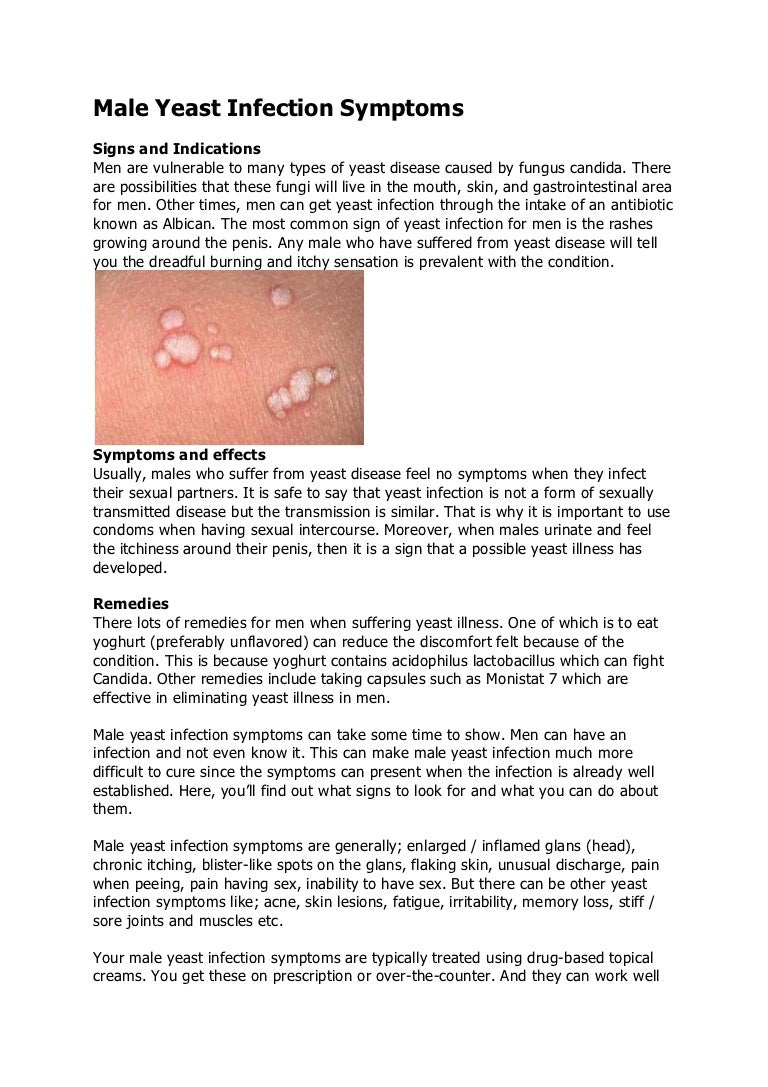 Therefore, regular strengthening of the immune system can reduce the risk of infections and facilitate their treatment.
Therefore, regular strengthening of the immune system can reduce the risk of infections and facilitate their treatment.
Page not found – Zalain
Page not found – Zalain
Nothing appears to have been found at this location.
HAS CONTRAINDICATIONS. IT IS NECESSARY TO CONSULT WITH A SPECIALIST
© All rights reserved.
The rights to this site belong to EGIS-RUS LLC 2021.
Registration number: ПN015678/01
Registration number: ЛС-000021
Personal data processing policy
If you become aware of an adverse reaction when using a product from portfolio
EGIS-RUS LLC, please provide this information via any of the contact forms convenient for you:
- E-mail: [email protected]
- Phone: 8 495 363-39-66
- Fill out the form on the website Yartsevskaya, 19, block B, floor 13
Phone: +7 (495) 363-39-66 Telefax: +7 (495) 789-66-31EGIS Group is one of the leading drug manufacturers in the Central and Eastern Europe.

Hide sources¹ “Features of Candida Ablicans dimorphism in strains isolated from patients with vaginal candidiasis”, Protsenko A.V., Anokhina I.V., Dalin M.V., Kravtsov E.G. isolated from patients with vaginal candidiasis // Vestnik RUDN University. Series: Medicine. 2007. No. 2.
² https://www.rmj.ru/articles/obshchie-stati/Kandidoznyy_vulyvovaginit__sovremennaya_lechebnaya_taktika/ (Regular editions of “RMZH” No. 15 dated 18.08.2005 p. 987 / Authors: Tikhomirov A.L. 1, Oleinik Ch.G. )
³ Clinical guidelines for the diagnosis and treatment of diseases accompanied by pathological discharge from the female genital tract. Russian Society of Obstetricians and Gynecologists. Edition 2, corrected and supplemented – M., – 2019.- 56 p.
⁴ Carson C. F. et al. Melaleuca alternifolia (Tea Tree) Oil: a Review of Antimicrobialand Other Medicinal Properties. Clinical Microbiology Reviews, Jan. 2006, p. 50–62
⁵ Batyrova Z.K. et al. Substantiation of the possibility of using the gel for intimate hygiene with tea tree oil in the complex treatment and prevention of candidiasis // Reproductive health of children and adolescents.

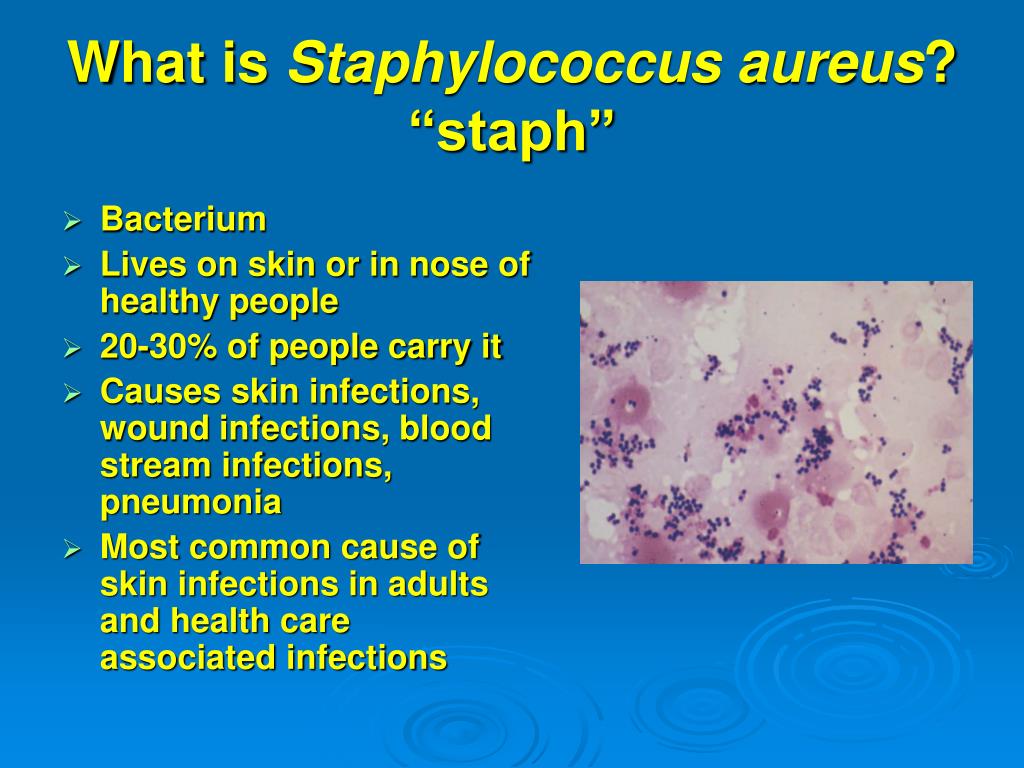 This form can begin with irritation, dryness, itching, or scaly skin. Over time, your skin may thicken and crack. This infection can involve your entire sole and extend onto the sides of your foot.
This form can begin with irritation, dryness, itching, or scaly skin. Over time, your skin may thicken and crack. This infection can involve your entire sole and extend onto the sides of your foot.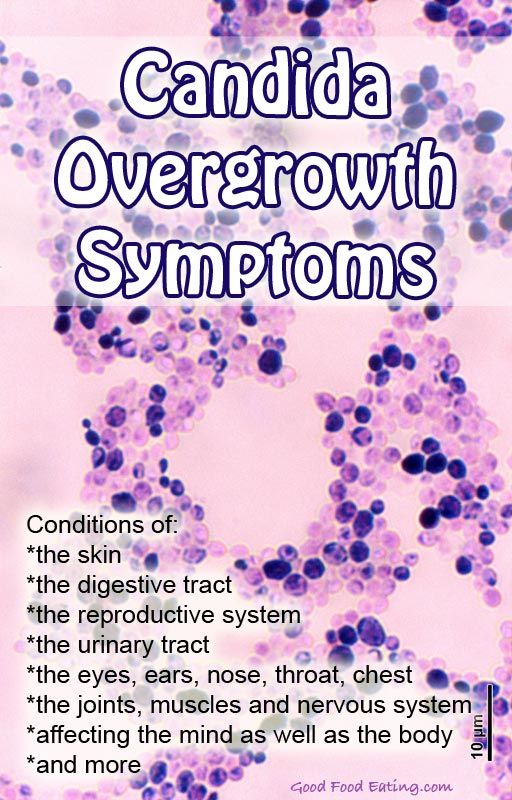
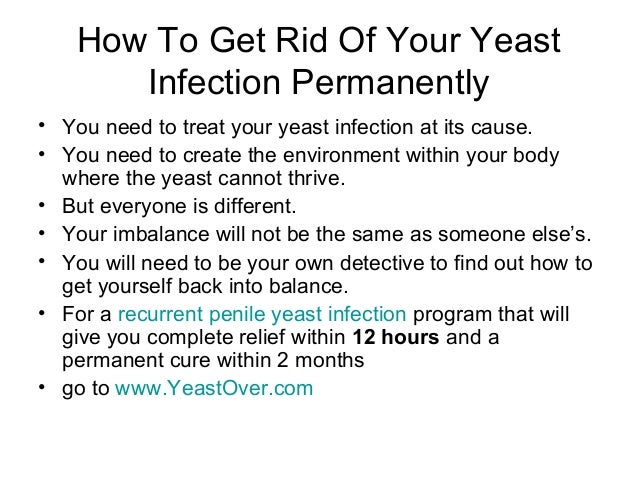 1 What are yeast infections?
1 What are yeast infections?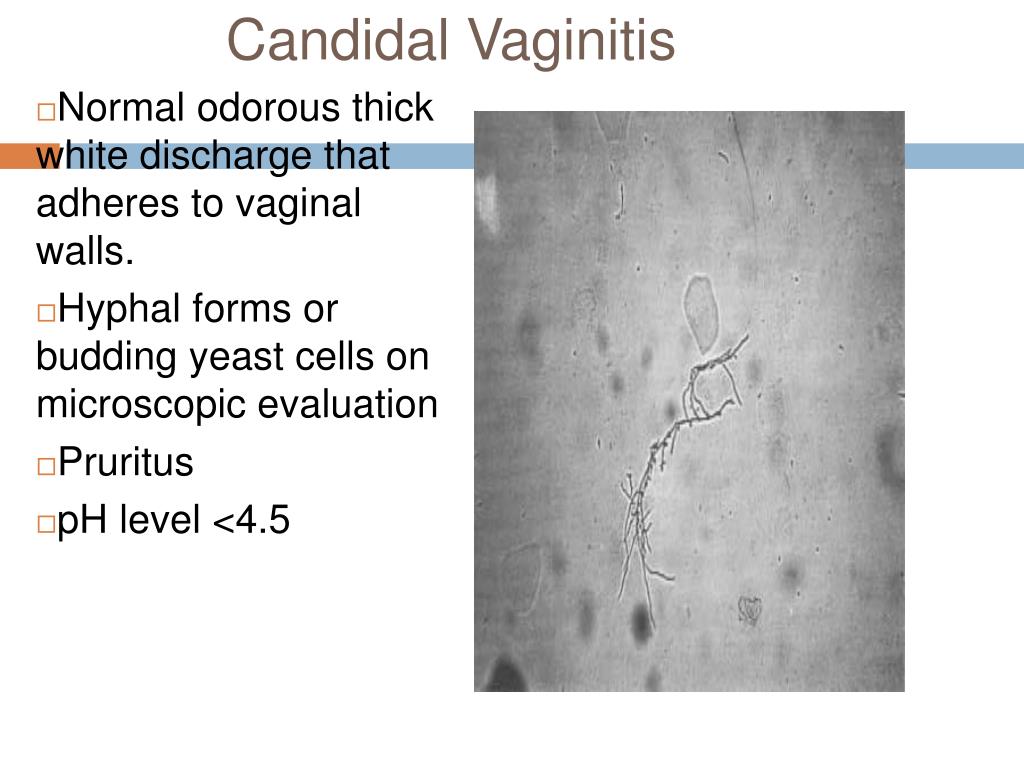 8 Yeast infections: Candida
8 Yeast infections: Candida


